Kamikatsu, the Japanese village of almost zero waste
Published 13 June 2017 by Cherise Fong
The movement is picking up speed, from San Francisco to Abu Dhabi, from Nestlé to Ikea, from governments to communities. In Japan, the tiny village of Kamikatsu (pop. 1,600), is leading the way toward zero waste.
From our correspondent in Tokyo (words and photos)
At a time when our entire planet is suffocating from the sheer quantity of garbage produced by the human species, the rural community of Kamikatsu, nestled in the rice-paddied mountains of Shikoku, the poorest and least populated of Japan’s four main islands, holds the zero waste torch firmly in hand.
The international zero waste movement advocates to reduce, reuse, recycle and compost our waste, in order to promote an industrial system that manufactures sustainable products, which will in turn eliminate toxic materials from incinerators and landfills, while tending toward the total annihilation of waste.
About a hundred locations around the world, including a handful in Japan, have declared their zero waste policy with a target year on the horizon of their ambition. For Kamikatsu, the first Japanese municipality to declare its commitment in 2003, that year coincides with the date of the Tokyo Olympic Games: 2020.

When asked if Kamikatsu is on track to achieve its goal, Akira Sakano, visionary founder and chair of the Zero Waste Academy (ZWA), explains: “Zero waste is a goal that you don’t need to achieve. Zero is just a slogan, like ‘zero drunk-driving’—of course, there will always be that one incident. But by saying ‘zero’ you can be creative enough to achieve 99%. You can engage more people, which is the main goal of zero waste.”
Currently, Kamikatsu has achieved a recycling rate of 80%. If the number is impressive, it doesn’t tell the whole story, says the leader of ZWA, which manages the local waste collection center and spurs a number of initiatives aiming for zero waste. Because while the recycling rate may be rising, the actual quantity of waste produced has not budged—a phenomenon due to the plethora of packaging on almost every product sold.
“As an organization, we’re not so interested anymore in looking into the details of recycling,” says Sakano. “It has much less priority than influencing producers and other communities to get into the zero waste concept. Zero waste is not only about recycling, it’s about changing the entire system of consumption: How can we actually change the products themselves, and the buying habits of consumers? There is already a unique mindset shift among certain people once they start segregating their waste, they start to think which materials have less packaging, which are less trouble to segregate. But we still need to create the option of no packaged products. That’s our next challenge.”
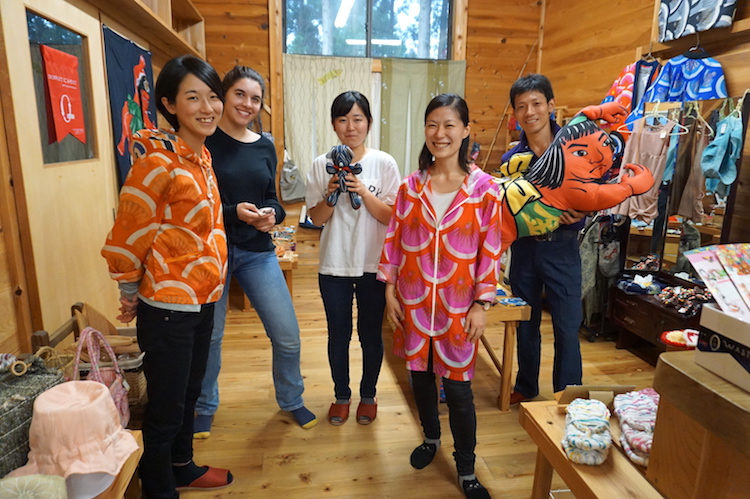
Meanwhile, the Zero Waste Academy continues to discuss with Japanese manufacturers, organize festivals, workshops, presentations and other events to raise awareness of the importance of reducing waste, from local children to international visitors.
Since 2016, businesses in Kamikatsu can earn a “Zero Waste Accreditation” by properly sorting and recycling their waste, training their employees in ecological practices, and declaring their own zero waste goals: buying local produce, adopting multiple-use items, offering customers the possibility to bring their own bottle or container for takeout, reusing local resources that contribute to the circular economy… So far, at least six businesses—five food&beverage establishments and one hot spring—have been accredited.
Carp raincoats
The Zero Waste Academy has opened two “Kuru Kuru” spaces, whose name references the circular movement of goods. In the second-hand shop, where Kamikatsu residents can leave their old objects that are still useful (clothes, tableware, etc.), anybody can take home what they like for free. Here, the circulation of goods is measured by mass. In 2015, around 13 tons of objects were left inside the shop and around 11 tons were taken away, resulting a reuse rate of approximately 85%.
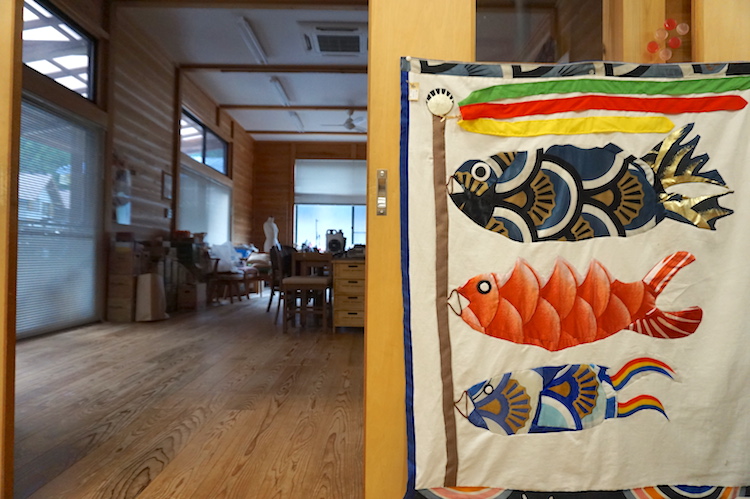
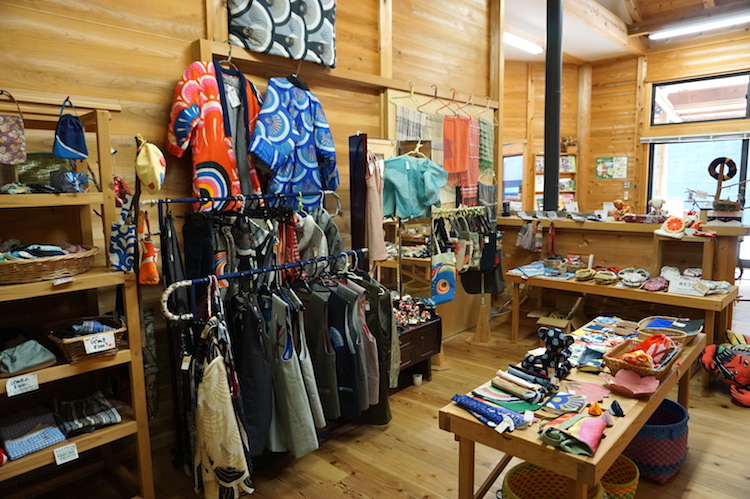
The Kuru Kuru craft center, an oasis of art amidst the garbage, attracts more than 2,000 visitors each year. On display for sale are jackets, shirts, bags, scarves, sandals and other curiosities made from old fabrics—even from old kimonos, similar to the Reborn Kyoto project we covered—by around 20 creative “grannies” from the region. But Kuru Kuru’s signature items are the jackets made from old carp streamers in the sewing and knitting studio right next door. The long brightly colored flags, traditionally flown to celebrate Children’s Day on May 5, have gone out of style as the population has aged.
Adjacent to the Kuru Kuru shops and Zero Waste Academy office, behind big red banners cheering “Zero waste by 2020!”, the Hibigatani Waste Station is open every day of the year from 7:30am to 2pm, closed only for the three days of the New Year holidays. Across the street is the former open incineration site; on the other side is an area where freshly chopped pinewood is sold.
Kamikatsu’s waste is currently sorted into 45 categories, including several for paper, glass, cans, plastics, etc. Above each dedicated recipient is a sign indicating the place where these objects will be treated and the amount in yen per kilogram (positive or negative) depending on how much their recycling will earn or cost the municipality. On this weekday morning, two women drive up to drop off and sort their household trash, assisted by Kazuyuki Kiyohara, head of the waste station, and another staff member.

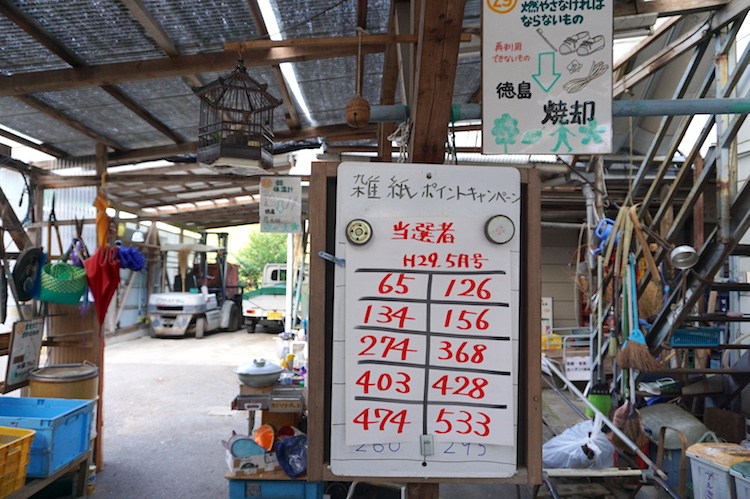
Sorting into 9, 22, 34, then 45 categories
Kamikatsu’s ecological history began well before its official zero waste declaration. Since the 1990s, thanks to local subsidies, every household has its own electric composter. After the Japanese government prohibited open incineration, each municipality was responsible for properly treating its waste, or transporting it to the nearest city that could. Given its modest budget, in 1997 Kamikatsu began to educate its residents about sorting their waste for recycling—first into 9 categories, then 22, then 34… up to 45 categories today.
In this village where half of the population is over the age of 65 and a quarter is over the age of 85, this initiative has encountered its share of resistance. But over the past 20 years, many mothers have come to appreciate the virtues of clean air for their children, and even the elderly of this rural community have gradually grown accustomed to sorting their trash, while pursuing their own activities.
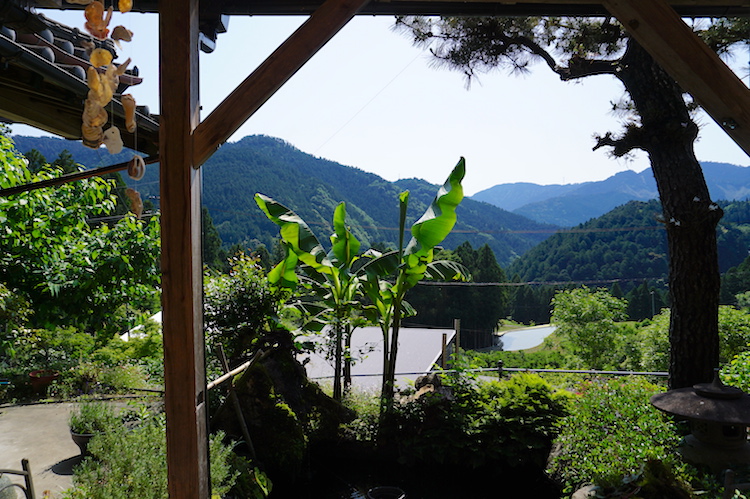
Kishi-san, 69 years old and full of life, who has traveled all the way to China and Australia but never set foot in Tokyo, loves to welcome adventurous travelers to her minshuku Yama Ai, a traditional house up in the mountains. She lives there with her husband, 73, also a native of Kamikatsu, their son and his wife, and their two grandchildren. Like many others in the region, they abandoned their forestry business after the Japanese government started to import cheaper wood from overseas in the 1970s. Since then, they raise thousands of chickens, which they sell three times a year to support the whole family. Kishi-san also likes to dry flowers, pickle fruits, weave baskets and cultivate her rose garden.
Her neighbor, Sakano-san, 89, is one of the first employees of Irodori, the iconic leaf company rooted in Kamikatsu since it was founded in 1986. Today, the average age of its staff is 70. Irodori sells more than 80% of Japan’s tsumamono, the decorative leaves that are used to garnish sashimi and other traditional Japanese dishes. “This work has saved me from dementia,” she says, as she delicately smoothes a fresh green maple leaf.
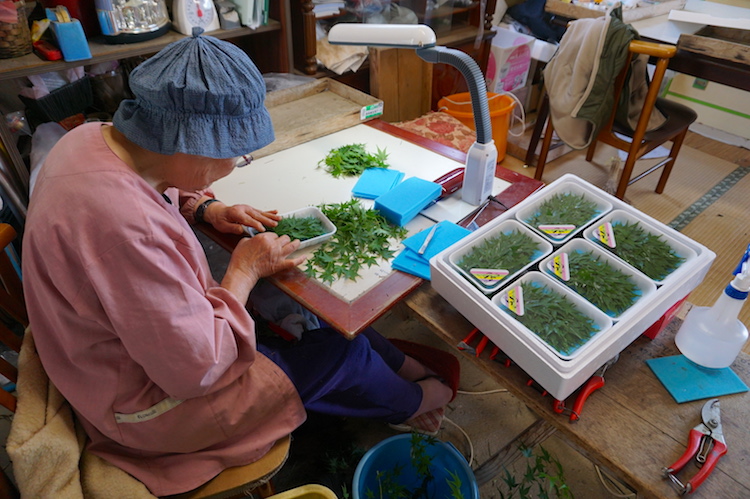
The population of Kamikatsu also includes younger new residents, in search of lifestyles that are more autonomous or closer to nature, some even enterprising to open a restaurant or other local service, ideally accredited zero waste.
Ecodesign and BYO bottle
The distinctive design of the Rise&Win Brewing Co., opened in 2015 and quite visible on the uphill roadside, won an architecture prize for the ecodesign of its south-facing façade made from windows reclaimed from demolished schools in Kamikatsu. But all the profits from the brewery and restaurant go back to the owners based in the city of Tokushima.
Further down in the valley, the very chic Café Polestar, opened in 2014 by Kamikatsu native Terumi Azuma, another core member of the Zero Waste Academy, embodies the spirit of zero waste in all aspects of its business. The walls of the building are made from local Japanese cedar trees. The young server brings me a delicious yukou tart, full of flavor from the hybrid fruit cultivated exclusively in the region, accompanied by a fine biscuit and a stem of maple leaves just picked outside. Once in a while, the café hosts a presentation by an expert who comes to talk about the zero waste concept. Matsumoto-san, Azuma’s husband and a native of Osaka, admits that these first years have not been easy, but he appreciates the challenge of this new entreprise and very different lifestyle far from the oppressive metropolis.
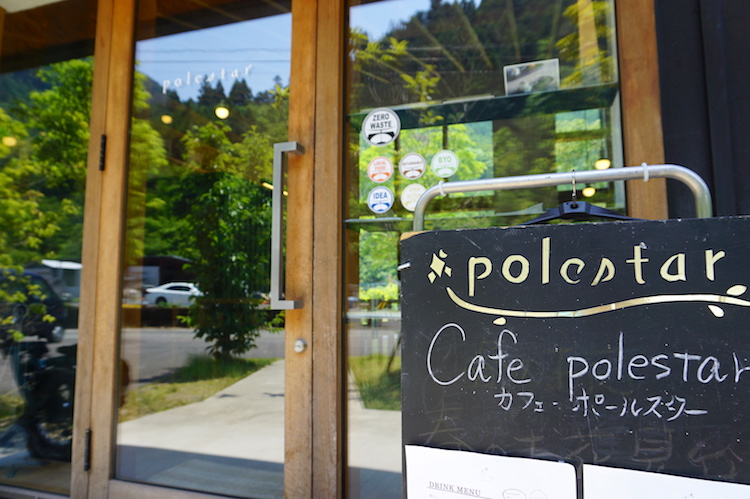
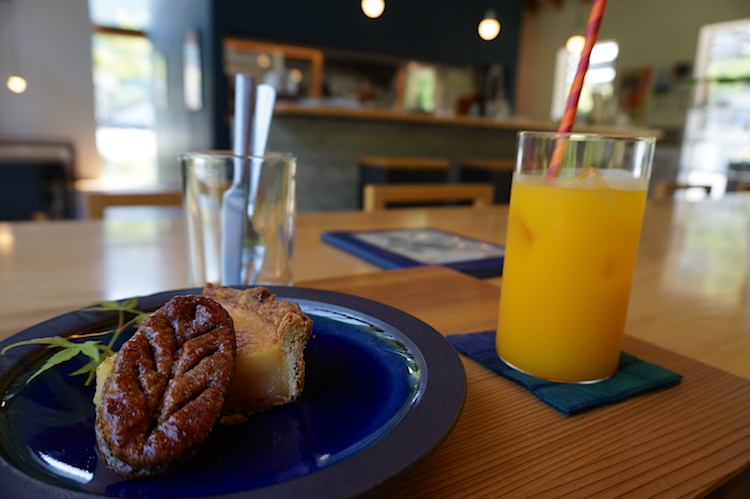
The zero waste devil is in the details, as proven in this final anecdote. As I refused to take the 1L glass bottle of tangerine juice to go, too heavy for my 40km bicycle ride back to Tokushima city, Matsumoto-san made me an offer: “If you have your own bottle, we’ll fill it up.” And so, Café Polestar sold me 500ml of tangerine juice, which I took away in my own plastic bottle.
Cycling back down the mountain, passing terraced rice fields and “Beware of falling rocks” signs through dense, deep green forests of cedars and cypress as far as the eye can see, one starts to feel exactly where individual responsibility begins in this tendency toward zero—in a forward movement where every object is a weight, where every object is a choice.
More about the Zero Waste Academy (in Japanese)

